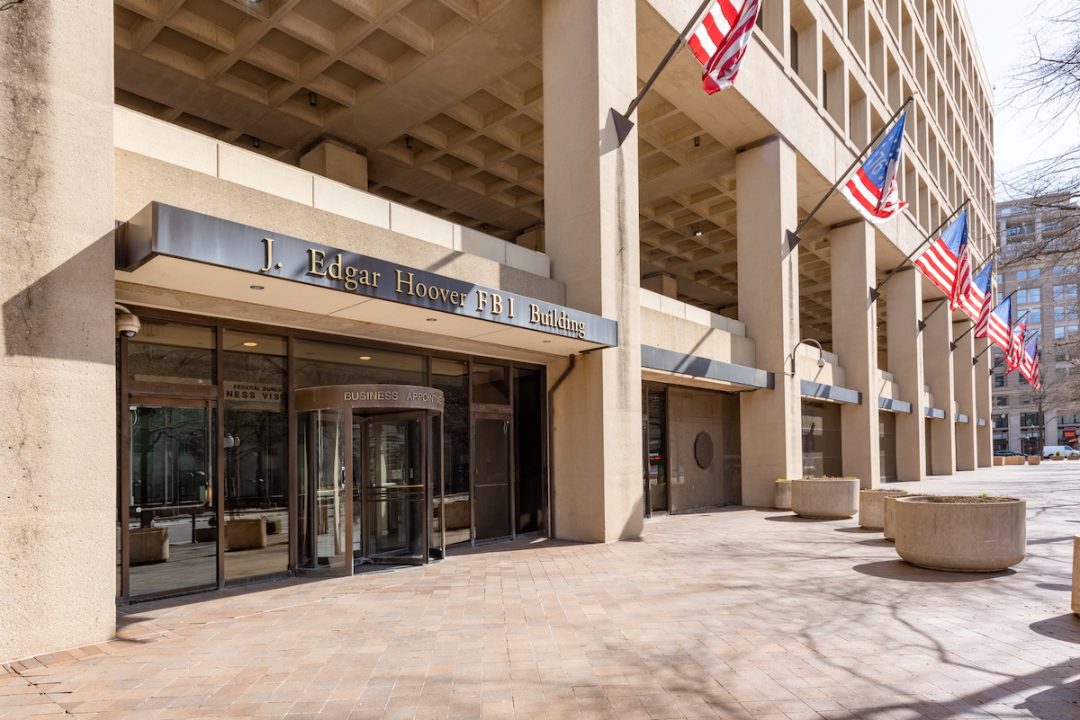
The Trump administration is moving to sell off hundreds of federal office buildings as part of a broader push to privatize government assets. According to a Fortune investigation, the initiative, led by the Department of Government Efficiency (DOGE), follows a private equity playbook: sell real estate now, lease it back later.
Major government contractor and DOGE figurehead billionaire Elon Musk made it clear in a February cabinet meeting:
Anything that can reasonably be privatized should be privatized.
This, apparently, includes the J. Edgar Hoover Building (FBI headquarters), Veterans Affairs offices, and buildings housing senators’ offices in Boston and Chicago, according to Fortune. While only two dozen buildings are officially listed for sale, The Washington Post confirmed that “officials are quietly moving ahead with a push to sell hundreds of publicly owned buildings to private companies — which can then lease them back to the government[.]”
The General Services Administration (GSA), notes Fortune, briefly posted a list of 500 “non-core assets” in March before removing it.
Quick Cash, Long-term Loss?
Experts warn the plan could backfire. While the government may receive an immediate cash influx, it sacrifices long-term control over public infrastructure. Fortune quotes, “It’s great to get this big slug of money upfront when you sell the building but if you’re going to be leasing the building back for a period of time you’ve lost control of the real estate,” said Kevan Ventura, a principal in the real estate practice of law firm Goldberg Kohn.
Ventura questioned the fiscal logic: “Are your lease costs eventually going to outstrip what you made in profit?”
Adding to the concern, commercial real estate values remain low, especially in D.C. Ermengarde Jabir, director of economic research at Moody’s Analytics, said in an email to Fortune,
So many buildings have sold at deep discounts in recent months, particularly in the Washington, D.C. area, [that] corporate office landlords might be more hesitant at the moment to purchase office properties without quite knowing where or if values in the office market have bottomed out.
She added that dumping multiple government buildings on the market could further depress prices.
Repeating Chicago’s Mistake?
Critics point to past municipal disasters as cautionary tales. The most cited example? Chicago’s 2008 parking meter deal.
That year, the city sold the rights to its parking meters for $1.2 billion in a rushed, opaque deal. In exchange, it gave up 75 years of meter revenue. Rates doubled almost immediately, reaching $6.50 an hour in some areas. The investors recouped their entire cost in just 15 years — leaving six decades of pure profit.
Chicago lost control over a core piece of its infrastructure and gave away a long-term public asset for short-term cash. It was, in effect, a fire sale.
The federal plan to sell and lease back buildings follows a nearly identical logic. Cash today, consequences tomorrow.
Donald Cohen, author of The Privatization of Everything, warned the government risks “getting hosed” much like the city of Chicago. He said,
Real-estate investors aren’t going to pay less than whatever [agencies] are already paying to maintain the building. There’s no way to pay less; it’s physically not possible.
Cohen urged a smarter alternative: “Sublease unused space to private tenants. Don’t give up your seed corn.” On the other hand, the sell-off is happening amid massive — and often chaotic — layoffs of federal workers as DOGE is automating some government functions. Therefore, at least some of the buildings will genuinely become redundant.
How It All Began
The federal building selloff wasn’t improvised. It was ordered from the top — and it came with instructions.
On February 26, President Trump signed an executive order directing agencies to cut waste and slash spending. The order required each agency to “review all existing covered contracts and grants and, where appropriate … terminate or modify” them — and to do it all “in consultation with the agency’s DOGE Team Lead.”
It didn’t stop there. Section 3(g) of the order targeted federal property directly. Agencies had to update real estate inventories, review their lease termination options, and — critically — begin preparing to unload real estate “no longer needed.” The president gave the GSA — the agency responsible for managing federal real estate — 60 days to submit a full disposition plan to the White House budget office.
A week later, the GSA publicly announced it would begin selling more than 440 buildings deemed “non-core,” with the stated goal of “potentially” saving “more than $430 million in annual operating costs.”
The directive was clear: shrink the government’s physical footprint and do it with DOGE’s oversight. The rest — lists posted, revised, and removed — is just execution.
Who Stands to Gain?
While the full list of buyers remains unclear, real estate investment trusts (REITs) focused on government leases are well positioned to benefit. One of them, Easterly Government Properties, has publicly supported GSA reforms that would streamline leasing and sales. In February, its CEO Darrell Crate — a former Massachusetts GOP chairman — publicly backed DOGE’s mission. He called the agency “an exciting opportunity” to cut bureaucracy and save taxpayer money, and offered detailed recommendations to reform GSA leasing rules.
Crate argued that the current system leads to “significant waste” and backed leasing over owning, streamlined lease approvals, and more flexible federal budgeting rules.
Cities with high vacancy rates are also angling for a piece. Hartford officials, for example, are reportedly preparing pitches to DOGE to attract federal offices displaced by the selloff. As CT Insider noted, they see the real estate shakeup as an opening to fill empty downtown space.
What’s Next?
The GSA owns and leases roughly 8,400 buildings, so the initial sale of 440 might not seem like much. But officials signal this is just the first wave. WIRED reports that the plan is to “eventually to reduce the ‘size of the owned real estate footprint by 50 percent and the number of buildings by 70 percent’.”
As the government prepares to offload public property, including some of the nation’s most iconic buildings, critics across the spectrum warn: The American public may be left renting what it once owned.
The news has an eerie echo of the World Economic Forum’s (WEF) infamous projection: “You’ll own nothing and be happy.” Under DOGE’s plan, the federal government — and by extension, the public — could end up leasing back courthouses, federal offices, and national landmarks from private landlords, indefinitely.





